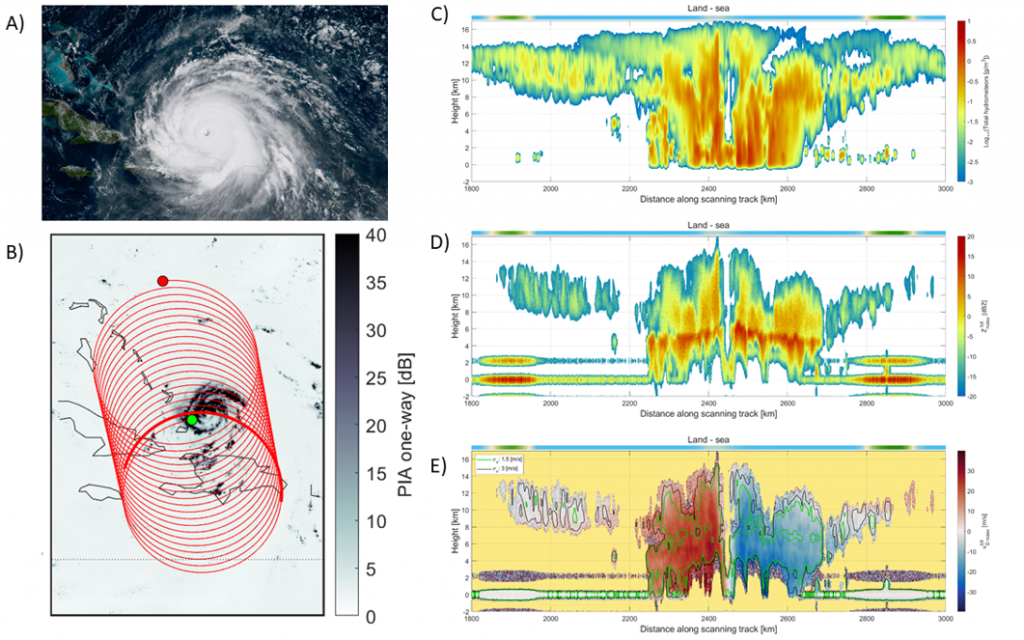Products
Measurements
The mission will measure range resolved reflectivities, polarimetric variables (LDR, ZDR, ϕDP, ρHV), line of sight (LOS) Doppler velocity and brightness temperatures both in the H and the V channel. Examples of WIVERN observables are shown in the Figure below.

Products
Doppler-based products
- HLOS winds (the horizontal component of the LOS winds) that are representative of the large-scale flow over horizontal distances of 20 km or more and are therefore candidates for data assimilation.
- Transient convective motions detected by changes in the LOS Doppler shift on the scale of 1 km. The aim is to identify convective regions by the level of these changes at the km scale as opposed to stratiform regions where the km to km LOS Doppler changes are much lower. For convective regions these km to km LOS changes will be expressed in terms of the statistics of the frequency and magnitude of convective motions. These statistics can then be used to validate the new generation of climate and NWP models that now explicitly represent convection. In the past the convective motions have not been resolved but the effect of convection has been parameterised.
Reflectivity and brightness temperature-based products
- Ice water content (IWC)
- Liquid water path (LWP)
- Rain and snow rates
